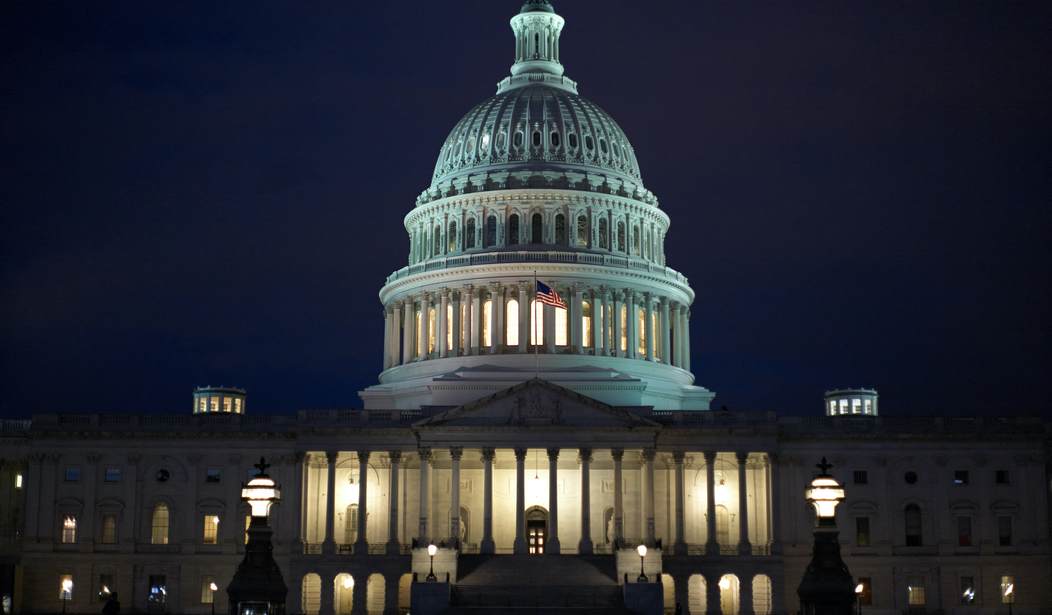The countdown continues for the November midterm elections. We're now three and a half weeks away from Election Day. The polls continue to look good for Republicans, even though some are trying to claim Democrats have a chance of holding on to the House and the Senate. Republicans are up in many polls for the generic ballot and lead on the key issues that matter to voters.
Another interesting kind of polling is of competitive districts. In late July, AARP released one showing Republicans up in competitive districts.
CNN released a poll on Thursday morning looking at registered voters and likely voters while also honing in on voters in competitive districts. In her write-up, CNN Polling Director Jennifer Agiesta highlights the latter for her headline: "CNN Poll: Voters tilt toward Republicans over Democrats in competitive districts."
Democrats have the edge over Republicans on the generic ballot among likely and registered voters, at 50 percent to 47 percent and 46 percent to 43 percent, respectively. It's Republicans who have an edge among voters in competitive districts, though, at 48 percent to 43 percent.
Those in competitive districts are also more likely to say that Republican policies would move the country in the right direction if they took control of Congress. While the split is pretty even for likely voters, with 51 percent saying it would be the right direction and 48 percent saying the wrong direction, 54 percent of voters in competitive districts say it would be the right direction, compared to 45 percent who say the wrong direction.
Recommended
CNN's Editor-at-Large Chris Cillizza also highlighted this finding, noting late Thursday morning that the competitive district findings represented "A very good number for Republicans in new CNN poll." As he writes in his analysis:
But, CNN did something else with the generic ballot question too. They asked the same question of a subsample of people living in competitive congressional districts – the places where the House majority will be decided. And they found something very different happening there.
Among likely voters in competitive congressional districts, 48% said they would vote for the generic Republican candidate for House while 43% said they would opt for the generic Democratic candidate, a significantly different finding than in the electorate more broadly.
Now, remember what the generic ballot tells us. It’s best understood as a sort of weather vane, pointing in the direction that the political winds are blowing and, generally speaking, giving us a sense for how hard they are blowing too.
What the numbers above suggest to me is that while Democrats are faring well nationally in the battle for the House, that in the places where it really matters – where the two parties are battling it out for control – that Republicans are actually in far better position that that national topline number might suggest.
Those numbers also seem to make clear that, at least in the most competitive House races, the clear bump for Democrats over the summer – fueled by reaction to the Supreme Court’s overturning of Roe v. Wade has faded somewhat and the historical trends, which favor the party out of the presidency in a midterm year, has begun to reassert themselves.
Put simply: If Republicans are able to maintain a generic ballot edge in those most competitive congressional districts, they should have no problem at all in picking up the five seats they need to retake the House majority next month.
Republicans also have an advantage in other ways, as likely voters and registered voters are more likely to say that they believe the Republican candidates where they live "have a clear plan for solving the country's problems."
Among likely voters, respondents are just as likely to say Republican candidates do than neither party, at 35 percent, while 30 percent say Democratic candidates. Registered voters are a little more cynical in that a plurality, 41 percent, say neither party does. Republicans still have the edge over Democrats, though, with 32 percent to their 28 percent.
Registered voters in competitive districts are particularly cynical in that 43 percent say neither party has "a clear path," but the gap between Republicans and Democrats is even wider, by 9 percentage points. Thirty-three percent say Republican candidates in their area as opposed to 24 percent saying Democratic candidates in their area.
And, by double digits, Republicans have more faith in their party. Seventy-one percent of Republican registered voters say Republican candidates have that "clear path," while 59 percent of Democratic registered voters say so about Democratic candidates.
Regarding which party has "the right priorities," Republican candidates are exactly or statistically tied with Democratic candidates among likely and registered voters. The results are better for Republican candidates among members of their own party and registered voters in competitive districts, though.
Among likely voters, 42 percent say Republican candidates and Democratic candidates "have the right priorities," while among registered voters, 40 percent say so about Republican candidates, and 39 percent say so about Democratic candidates.
Eighty-four percent of Republican registered voters said that Republican candidates had "the right priorities," while 80 percent of Democratic registered voters said the same about their party's candidates.
Among competitive district registered voters, Republican candidates had the edge over Democratic candidates, 39 percent to 35 percent, regarding having "the right priorities."
Another worthwhile metric to look at is motivated voters. Agiesta highlights how Republicans have the edge here, too:
Republican registered voters nationwide and in competitive congressional districts are a bit more likely to say they are deeply motivated to vote than are Democratic registered voters (52% extremely motivated among Republicans nationally, 46% among Democrats; in competitive districts, it’s 55% among Republicans vs. 45% among Democrats).
Agiesta also mentions a damning analysis when it comes to Democratic support later in her write-up:
The demographic divides the poll reveals ahead of this election suggest that core Democratic groups such as younger voters, Black and Latino voters, and even to some degree women, are expressing less support for Democratic candidates than they have in recent past elections. A CNN Poll among registered voters in early October 2018 found that 59% of women backed Democratic candidates in their district; now, 53% do. Among voters of color, 69% backed Democrats then but 59% do now. Latino voters break 52% for the Democrats, 23% for the Republican and 21% say they support neither candidate. Black voters split 81% for the Democrat to 11% for the Republican. And among voters younger than the age of 45, Democrats held a 15-point advantage in 2018 compared with just 8 points now. Likely voters in each of these groups currently tilt a bit more Democratic than registered voters, but motivation to vote among younger voters and voters of color is markedly lower than among older voters or White voters.
Such a point is particularly damning when it comes to the narrative of how abortion has motivated women voters to turn out more for Democrats in light of the Dobbs v. Jackson decision overturning Roe v. Wade. It's also another reminder that President Joe Biden and the Democrats are losing ground with Latino and young voters, as has been highlighted before.
This poll was conducted between September 3 - October 5, with 1,982 respondents and a sample of 695 adult residents in competitive congressional districts. The poll included 1,577 registered voters, for which there is a margin of error of plus or minus 3.5 percentage points, and 1,198 likely voters, for which there is a margin of error of plus or minus 4 percentage points.

























